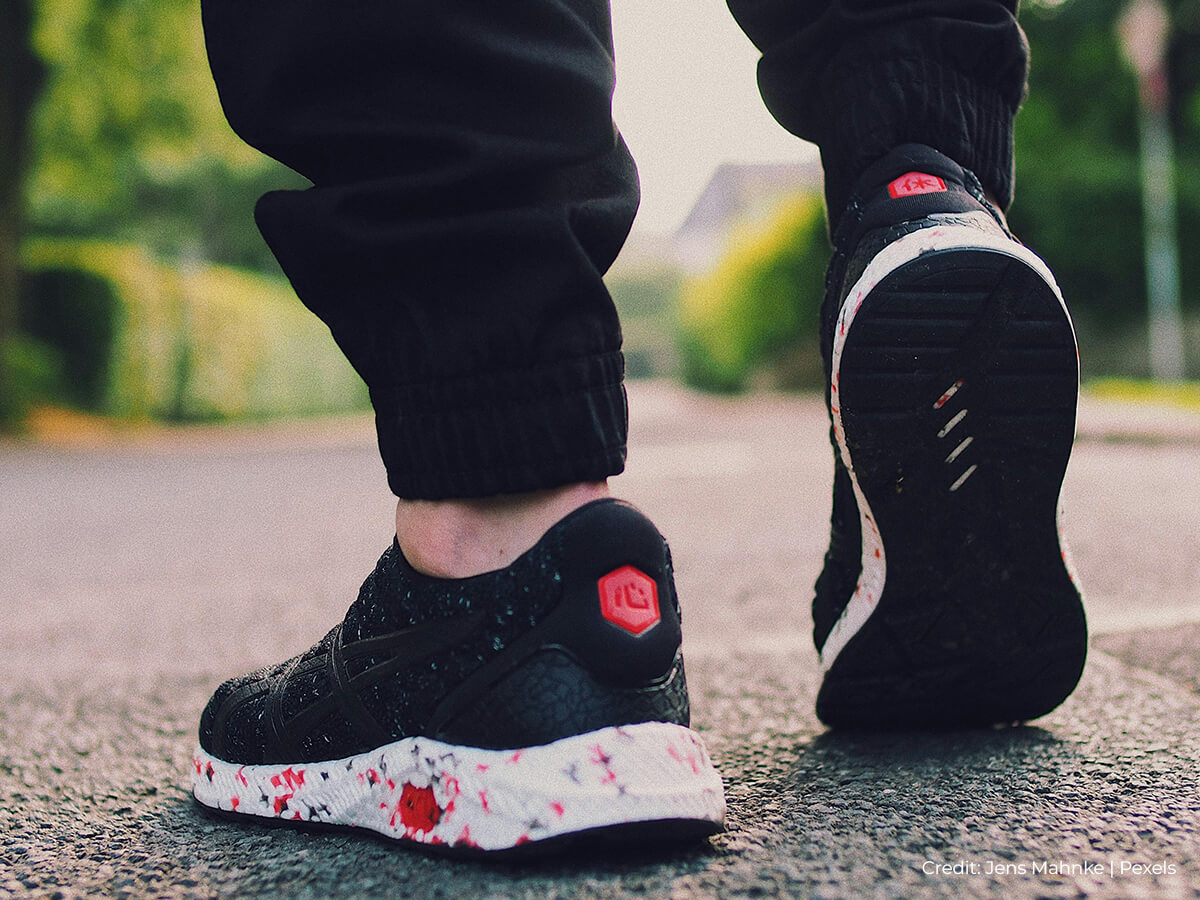Plantar fasciitis, a common cause of heel pain, can significantly impact your daily life, making even simple activities like walking a painful ordeal.
This condition, characterized by inflammation of the plantar fascia (the thick band of tissue that runs along the bottom of your foot connecting your heel to your toes), can sideline you from your favourite activities and diminish your overall quality of life.
While various treatment options exist, lacrosse ball therapy has emerged as a popular and effective self-management technique for plantar fasciitis pain relief. This article will look into plantar fasciitis, the benefits of lacrosse ball therapy, how to use a lacrosse ball for treatment.
A Lowdown on Plantar Fasciitis
Think of the plantar fascia like a bowstring supporting the arch of your foot. With each step, it stretches and contracts. However, when it’s subjected to excessive stress, repetitive strain, or overuse, tiny tears can develop in the tissue, particularly where it attaches to the heel bone. These micro-tears lead to inflammation, which is the body’s natural healing response. Unfortunately, in the case of plantar fasciitis, this inflammation can become chronic, leading to persistent pain.
Several factors can contribute to the development of plantar fasciitis:
-
Biomechanical Issues
The way your foot functions plays a significant role. People with flat feet (overpronation) or high arches (supination) are more prone to plantar fasciitis because these foot structures can place extra stress on the plantar fascia. Leg length discrepancies can also contribute.
-
Muscle Imbalances
Tight calf muscles are a common culprit. They restrict ankle flexibility, forcing the foot to compensate and putting extra strain on the plantar fascia. Weak intrinsic foot muscles (the small muscles within the foot) can also contribute, as they help support the arch.
-
Training Errors
A sudden increase in activity level, especially high-impact activities like running or jumping, without allowing the plantar fascia adequate time to adapt can overload the tissue and lead to inflammation. Improper running form can also be a contributing factor.
-
Footwear Choices
Shoes that lack adequate arch support, cushioning, or flexibility can fail to properly support the foot, increasing stress on the plantar fascia. Wearing high heels for prolonged periods can also shorten the calf muscles and contribute to the problem.
-
Weight and Obesity
Excess weight places increased pressure on the feet, making the plantar fascia work harder and increasing the risk of injury.
-
Occupation
Jobs that require prolonged standing, walking on hard surfaces, or heavy lifting can put individuals at higher risk.
According to a study, approximately 75% of cases of plantar fasciitis resolve spontaneously in 12 months. An estimate of 5% of cases, however, need surgery, with mixed results. Even with treatment, the resolution of symptoms can take weeks or months.
The Benefits of Lacrosse Ball Therapy for Plantar Fasciitis
Lacrosse ball therapy offers a targeted approach to addressing the underlying issues contributing to plantar fasciitis pain. Here’s a breakdown of the key benefits:
-
Increased Blood Flow and Healing
Rolling the lacrosse ball over the plantar fascia stimulates blood flow to the area. Increased blood circulation brings vital nutrients and oxygen to the damaged tissue, promoting healing and reducing inflammation. It also helps to remove metabolic waste products that can contribute to pain and stiffness.
-
Myofascial Release and Reduced Tension
The firm, textured surface of the lacrosse ball allows for deep tissue massage. This helps to release tension and tightness in the plantar fascia, as well as in the surrounding muscles, such as the calf muscles and the small muscles of the foot. By releasing this tension, the plantar fascia can function more effectively and painlessly.
-
Breaking Up Adhesions and Scar Tissue
Over time, chronic inflammation can lead to the formation of adhesions or scar tissue within the plantar fascia. These adhesions can restrict movement and contribute to pain. The pressure from the lacrosse ball can help to break up these adhesions, restoring flexibility and improving tissue health.
-
Trigger Point Release
Trigger points are tight, tender spots in muscles that can cause pain locally or refer pain to other areas. The plantar fascia and surrounding muscles can develop trigger points that contribute to heel pain. Applying pressure to these trigger points with the lacrosse ball can help to release them, reducing pain and muscle tension.
-
Improved Flexibility and Range of Motion
By releasing muscle tension and breaking up adhesions, lacrosse ball therapy can improve flexibility and range of motion in the foot and ankle. This can help to reduce stress on the plantar fascia and improve overall foot function.
-
Pain Reduction
Ultimately, the combination of increased blood flow, myofascial release, and trigger point release leads to a reduction in pain associated with plantar fasciitis. This allows individuals to return to their normal activities and enjoy a better quality of life.
-
Accessibility and Convenience
Lacrosse balls are inexpensive and readily available. The therapy can be performed at home, at your convenience, making it a practical and accessible treatment option for many people.
How to Use a Lacrosse Ball for Plantar Fasciitis Relief
This is a trigger ball exercise for the soles of your feet.
- Place the ball on the ground and you have a couple of options.
- You can simply roll your foot over the ball, adjusting the pressure to your comfort level. Another technique is to position the ball on the side of your foot and roll it across to the other side. The heel is anchored to the ground during this movement, allowing you to target deeper areas.
- For areas closer to the heel, anchor the front of your foot instead so you can get very close to the heel.
This is particularly beneficial for individuals experiencing plantar fasciitis pain or heel spurs, as it helps to release tension in the area.

Complementary Approaches for Plantar Fasciitis Management
These complementary approaches address different aspects of the condition and work synergistically with lacrosse ball therapy:
-
Stretching
Tightness in the calf muscles and the plantar fascia itself is a major contributing factor to plantar fasciitis. Regular stretching is essential to improve flexibility and reduce tension in these tissues. Effective stretches include:
- Calf Stretches: Leaning against a wall with one leg straight behind the other, feeling a stretch in the calf of the back leg.
- Plantar Fascia Stretches: Gently pulling the toes towards the shin, holding the stretch for 20-30 seconds. This can also be done by crossing one leg over the other and pulling the toes of the top leg towards the shin. Avoid excessive force that causes pain.
- Towel Stretch: Sitting with your leg straight, loop a towel around the ball of your foot and gently pull the towel towards you, holding the stretch.
-
Strengthening Exercises
Weak muscles in the foot and ankle can contribute to poor biomechanics and increase stress on the plantar fascia. Strengthening exercises can help to improve support and stability. Examples include:
- Toe Curls: Curling your toes inwards, as if trying to pick up a towel with your toes.
- Heel Raises: Standing on a flat surface and slowly raising up onto your toes.
- Marble Pickups: Picking up marbles with your toes and placing them in a bowl.
-
Supportive Footwear
Proper footwear plays a critical role in supporting the arch of the foot and cushioning the heel. Look for shoes with good arch support, a cushioned insole, and a flexible sole. Avoid shoes that are too tight or too loose. Consider orthotics or inserts for additional support if recommended by a healthcare professional.
-
Rest and Activity Modification
Giving your foot adequate rest is crucial for healing. Avoid activities that aggravate your pain, such as high-impact exercises like running or jumping. Consider low-impact alternatives like swimming or cycling during the recovery period. Gradually return to your normal activities as your pain improves.
-
Ice Therapy
Applying ice to the affected area for 15-20 minutes at a time, several times a day, can help to reduce inflammation and pain. Wrap the ice pack in a thin towel to avoid direct contact with the skin.
-
Night Splints
Wearing a night splint while you sleep can help to keep the plantar fascia stretched, preventing it from tightening overnight. This can be particularly helpful for reducing morning pain.
-
Weight Management
If you are overweight or obese, losing weight can significantly reduce the stress on your feet and improve plantar fasciitis symptoms.
When to Seek Professional Help
While self-management techniques like lacrosse ball therapy can be beneficial for many individuals with plantar fasciitis, it’s crucial to seek professional help if:
- Your pain is severe and debilitating.
- Your pain does not improve after several weeks of self-treatment.
- You experience numbness or tingling in your foot.
- You have difficulty walking or performing daily activities.
A qualified healthcare professional can accurately diagnose your condition, rule out other potential causes of your pain, and develop a tailored treatment plan to address your specific needs.
Listen to your body, and don’t hesitate to seek professional help from a chiropractor in Kitchener-Waterloo if your pain persists. Taking a proactive approach to your foot health will allow you to walk pain-free and enjoy an active lifestyle.
For comprehensive assessment and treatment of plantar fasciitis, contact Fairway Chiropractic Centre.
Reach us at 519-748-5535.











